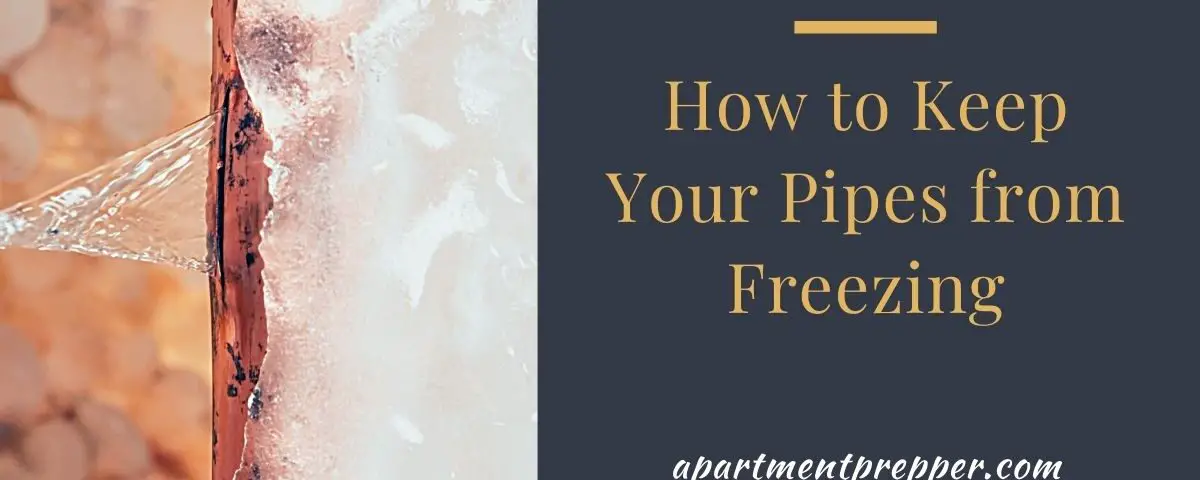Written by Bernie Carr
This winter has shown us unprecedented freezing weather affecting many states and millions of people. One of the after-effects of temperatures dropping below freezing is the chance that water pipes in your home or apartment can burst.
What causes pipes to burst in the cold?
Until I moved to Houston, I never worried about pipes bursting from the cold. Even before this historic winter, temperatures during the winter occasionally reach freezing (32 degrees Fahrenheit or 0 degrees Centigrade). Why do pipes burst in cold weather? What happens is, when water freezes inside the pipes due to cold outside temperatures or poor insulation, the volume of the water expands and causes pressure on the pipes from the inside. If it causes even a small crack, there is a chance the pipe will burst, which could interrupt your water supply and cause other damage.
Low-tech ways to keep pipes from bursting
Any time temperatures are expected to dip near freezing, take these steps to protect your pipes:
- Turn on a faucet on a low drip and leave it dripping overnight when temperatures are dropping. When water is moving along the pipe, it is less likely for freezing to occur. As a frugal person, I had some reservations doing this, as it feels like wasting water. However, if it’ll keep the plumbing from freezing it’s something I had to do. Losing water or being charged for a burst pipe is worse.
- Keep bathroom and kitchen cabinet doors open. This helps with air circulation, so that warm air in your home will reach the pipes. (Make sure you keep children and pets away from any household cleaners or chemicals under the sink.)
- Wrap the pipes with foam pipe insulation. If you don’t have time to purchase this in advance, you can use other materials such as newspaper, old towels, old blankets, etc.
- If you have outdoor faucets, make sure you disconnect any hoses. Wrap those outdoor faucets with insulating covers. In a pinch, I’ve used various items as faucet wrapping: bubble wrap, old socks, old towels, multiple layers of plastic grocery bags taped up with duct tape.
- If you have electricity, use a space heater to warm the room where your pipes are located.
What to do if you find a pipe that froze?
Despite your best efforts, you may find that a pipe has frozen anyway.
In this case, call your building manager and report the problem right away.
Turn off the water in the home if you are able to. Use a space heater or blow dryer aimed at the pipe to help thaw it out.
Your water storage
After the power outages during the winter storm, the residents of the city of Houston, woke up to a “boil water” emergency, with some areas not having water at all.
Even after taking precautions, your pipes can freeze, or your entire region can have low water pressure, or no water available.
Even if there is nothing going on in your area, I advise everyone to store a gallon of water per person per day for at least a week. Don’t forget to store water for your pets as well. This way, if something does happen, you’ll be ready and won’t have to worry about your family not having enough water.
We are an affiliate of Amazon.com, which means we received a small commission if you click through one of our Amazon links when you shop, at totally no cost to you. This helps keep the lights on at the blog. Thanks!
About the author:
Bernie Carr is the founder of Apartment Prepper. She has written several books including the best-selling Prepper’s Pocket Guide, Jake and Miller’s Big Adventure, The Penny-Pinching Prepper and How to Prepare for Most Emergencies on a $50 a Month Budget. Her work appears in sites such as the Allstate Blog and Clark.com, as well as print magazines such as Backwoods Survival Guide and Prepper Survival Guide. She has been featured in national publications such as Fox Business and Popular Mechanics. Learn more about Bernie here.




If you find you have NO WATER PRRESSURE at all, don’t forget you may have as much as 30 to 50 gallons in your hot water heater which you can access at the drain out valve at the bottom of the tank .
Hi Jimbo, That is a great tip-thanks for the comment!